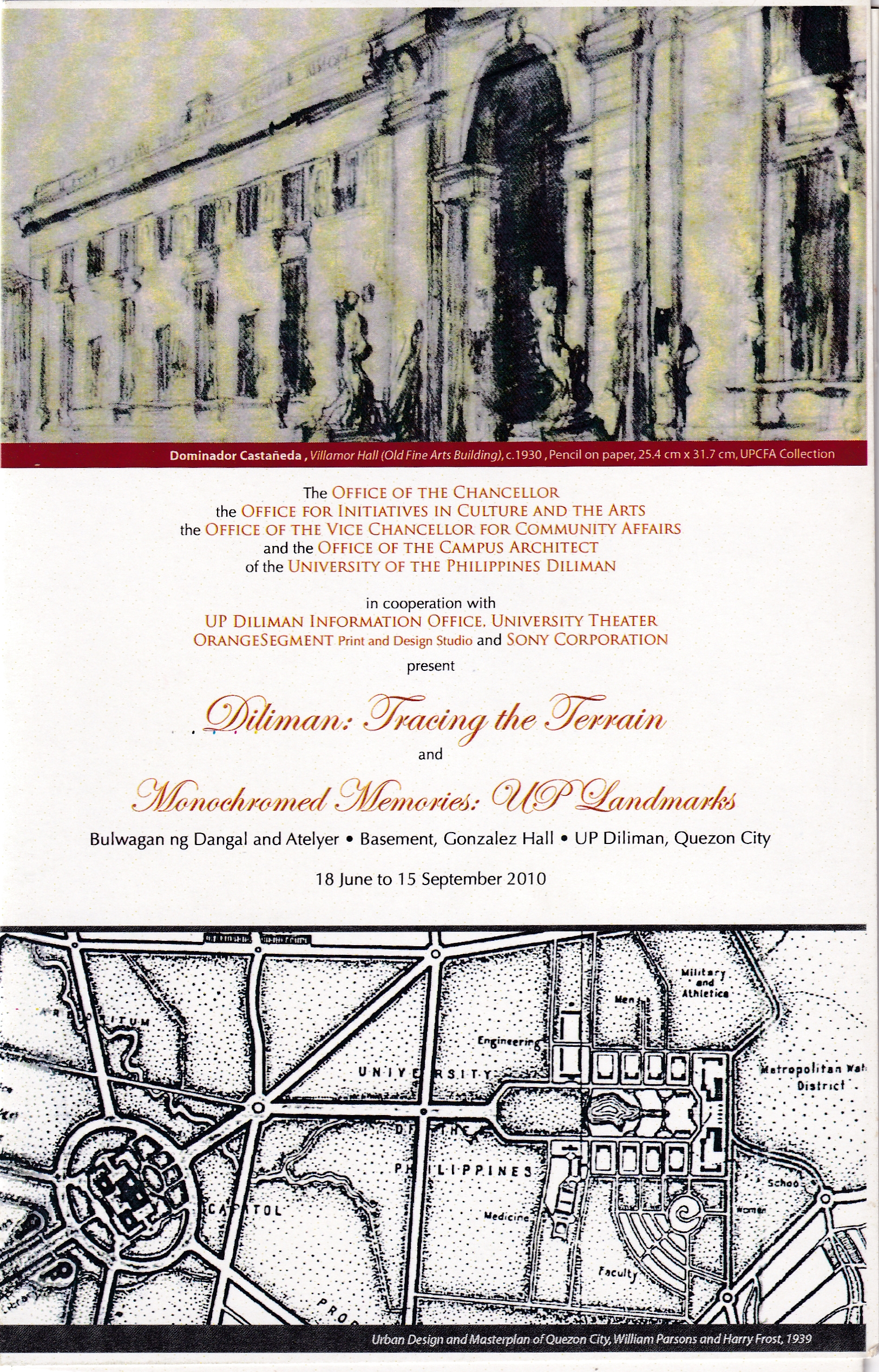
- This event has passed.
Diliman: Tracing the Terrain

This exhibition traces the physical genesis of the flagship campus of the University of the Philippines in Diliman, from its inception in 1939 to the present via the original drawings, archival blueprints, and other artifacts from the University’s institutional collection.
The University of the Philippines in Diliman has proven to be a model of campus architecture and planning. It boasts a stylistically diverse ensemble of buildings and public art set in a landscaped environment — creating a milieu where thought and discourse freely take flight. This diversity is the result of the evolution of its campus plan, in face of changing architectural theories and styles, as a manifestation of its dynamic and ensconced relationship with the concerns and events of the nation.
While the campus now has a number of landmark buildings by name architects and National Artists, its buildings do not operate as individual units, but as an ensemble, collectively creating spaces that are conducive to scholarly pursuit. The name Diliman may have originated from the edible species of fern which once thrived abundantly in the area, but now, the name Diliman is synonymous to architectural integrity and intellectual inspiration, due in large part to the University of the Philippines. A distinct sense of place has been created — a venue that hones convictions, shapes values and nourishes critical minds and creative imaginations.
